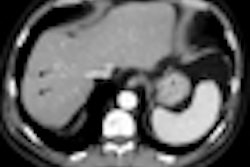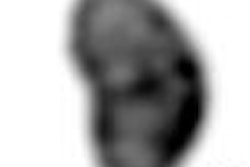ATLANTIC CITY, NJ - A hybrid 2D strain imaging technique can allow for improved cardiac elastography performance, according to Tomy Varghese, Ph.D., an associate professor of medical physics at the University of Wisconsin-Madison.
Varghese shared experimental and in vivo results with cardiac elastography during a talk Thursday at the Leading Edge in Diagnostic Ultrasound conference, held this week in Atlantic City.
Echocardiography and stress echocardiography are routinely used to assess myocardial function and ischemia based on visual wall motion scores. However, these visual wall motion scores are semiquantitative, operator dependent, and heavily weighted on the operator's experience and expertise, according to Varghese.
While tissue Doppler imaging (TDI) provides quantitative parameters such as the strain rate derived from Doppler velocity, strain and strain rate estimated using the technique are dependent on direction, he said. TDI also suffers from limitations such as an inability to differentiate between active contraction, simple rotation, and translational motion of the heart wall.
Due to these limitations in Doppler-derived velocity and strain indices, there has been renewed interest in using B-mode-based strain and strain rate measurements, Varghese said. For example, both GE Healthcare (Chalfont St. Giles, U.K.) and Siemens Healthcare (Malvern, PA) have introduced 2D speckle tracking methods for strain imaging on their cardiac ultrasound systems, Varghese said.
Cardiac elastography using radiofrequency echo signals can provide more accurate 2D strain information than is gained via B-mode image data, provided data are acquired at sufficient frame rates, he said.
While phased-array transducers are the de facto standard for echocardiography, previous 2D implementations of strain imaging were primarily developed for linear-array transducers, Varghese said. In response, the University of Wisconsin researchers developed a multilevel 2D hybrid strain imaging algorithm for data acquired using phased-array transducers.
This multistep algorithm employs a hierarchical search strategy using a pyramidal format to improve computational efficiency, he said. In the initial steps, pre- and postdeformation envelope signals to estimate coarse displacements. These coarse displacements are then used to guide the final processing step on the radiofrequency signals, employing window lengths on the order of 1-2 wavelengths to obtain subsample displacement estimates, Varghese said.
The team utilized this technique initially with a GE Vingmed Vivid FiVe scanner, and currently with a GE Vivid 7 scanner using a 2.5-MHz phased-array transducer, a frame rate of approximately 50-70 frames per second, and a 20-MHz sampling frequency.
To test their 2D hybrid strain imaging algorithm, the researchers compared it with a traditional 1D cross-correlation strain imaging method and a 2D cross-correlation-based block matching method. The three techniques quantitatively evaluated strain estimation performance based on signal-to-noise (S/N) and contrast-to-noise (C/N) values using both uniformly elastic and single inclusion tissue mimicking phantoms.
The phantoms were immersed in a safflower oil bath and scanned using a Siemens Antares ultrasound system, using a phased-array transducer with a center frequency of 2.22 MHz and 70% bandwidth.
The 2D hybrid strain imaging algorithm performed much better than the other two methods, he said. In other findings, the researchers determined that local strains can be estimated with excellent spatial resolution on the order of 1-2 wavelengths, with the same temporal resolution dependent on the frame rate of the ultrasound system.
In addition, S/N results showed that accurate quantification of the sinusoidal nature of the compression requires frame rates on the order of 10 times the compression frequency, Varghese said. In vivo results derived from short-axis views of the heart acquired from normal human volunteers also demonstrate this frame rate requirement for cardiac elastography, he said.
By Erik L. Ridley
AuntMinnie.com staff writer
May 22, 2009
Related Reading
Elastography shines in assessing breast lesions, April 29, 2009
Ultrasound elastography shows potential in thyroid nodules, February 11, 2009
Ultrasound elastography shows strength for diagnosing rotator cuff tears, January 15, 2009
Adding sonography to yearly mammograms helps find metachronous cancers, February 25, 2008
Breast sonoelastography aids in evaluating breast lesions, January 28, 2008
Copyright © 2009 AuntMinnie.com




















